You’ve baked some good loaves of sourdough, but the sourdough flavor profile is not perfectly pleasing to you. Maybe your bread is not as flavorful enough, or maybe it is too sour. Or just not quite the type of tang you had in mind.
This post is all about understanding the sourdough flavor profile and how to adjust your sourdough baked goods flavor. Once you can do this, the world of sourdough is way more interesting and satisfying as a baker and sourdough lover.
Learning about how to affect the sourdough flavor profile of your breads will give you control and choices. You will know how to prioritize the elements that most affect the bread in ways important to you, the connoisseur.
Let’s start here. What is Sourdough? Sourdough bread is a traditional type of bread with a rich history. This ancient bread is the staff of life. It has provided essential nutrition for various cultures of people around the world for centuries.
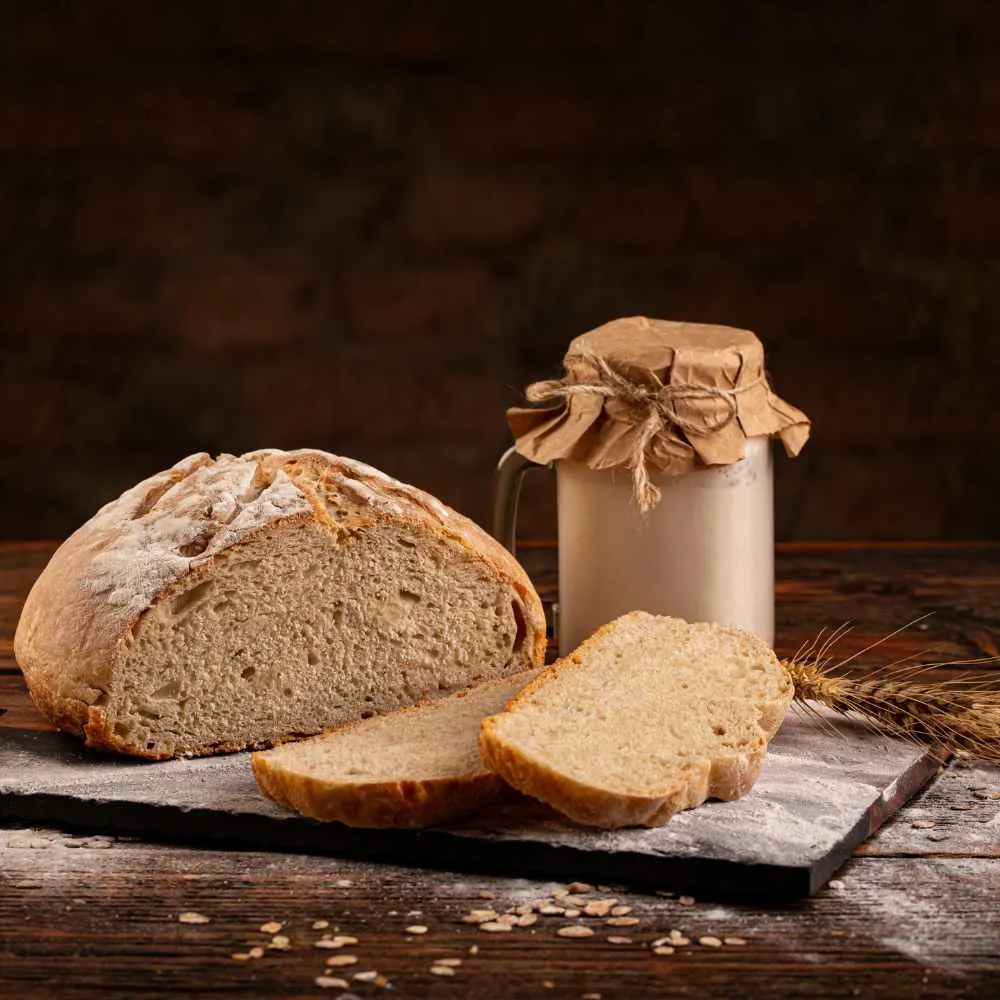
Sourdough bread has a unique flavor because it is influenced by the local yeast and bacteria, as well as the methods used to make it. Each place and culture that creates sourdough bread adds their own special touch to the recipe.
Varying regions and traditions used to create sourdough breads greatly affects the sourdough flavor profile. When you eat sourdough you are tasting the history of all these people.
Does Sourdough Bread Taste Good? Sourdough bakers appreciate sourdough bread and its unique, complex flavors, aromas and the chewy texture. However, The taste of the sourdough bread profile can vary depending on MANY factors.
The recipe, sourdough starter, flours and the dough development technique used and several other factors all play into the final sourdough flavor profile.
What makes sourdough bread taste good? There are several factors that contribute to making sourdough bread taste ‘good’. Of course flavor is subjective. Undertake your own personal flavor mission to create your favorite sourdough flavor profile.
So how do we change the flavor of our sourdough bread to suit ourselves and our family?
Here are the Elements of Building Your Personal Sourdough flavor profile for Your Sourdough Loaves: All these things impact flavor.
- A mature sourdough starter: A mature starter, one that has been fed and cared for over time, will have a more complex flavor and a better ability to ferment the dough, resulting in a better-tasting bread.
- Proper fermentation: Allowing the dough to ferment for a sufficient amount of time will allow the natural yeasts and bacteria present in the sourdough starter to break down the sugars in the flour and produce the characteristic tangy flavor of sourdough bread.
- The right balance of salt: Salt plays an important role in bread making, it helps to develop the gluten structure, improves the flavor and helps to preserve the bread. The right amount of salt will enhance the flavor of the bread.
- Proper acidity: Sourdough bread relies on the acidity produced by the wild yeast and bacteria to develop its characteristic tangy flavor. A proper acidity level will give the bread a good balance of tanginess.
- Quality ingredients: Using high-quality flour, water, and other ingredients will give the bread a better taste and texture.
- Proper baking technique: Baking the bread at the right temperature and for the right amount of time will help to create a crispy crust and a moist and flavorful bread.
- A good crumb structure: Sourdough bread should have a moist, open crumb structure with large, irregular holes. This allows the bread to have good texture and a pleasant mouthfeel.
- A good crust: Sourdough bread should have a crispy crust, with a nice color and a good chewiness that adds to the overall texture of the bread.
Keep in mind that a good sourdough bread takes time and practice to make. This is a scientific process. You will learn with experience. Today we are touching on some of the things you can focus on to make your own ‘personal best’ sourdough bread.
All sourdough breads have a unique and complex sourdough flavor profile. This is impacted by several things you can control. Even more than those listed above. Let’s get into them.
Breaking the Sourdough Flavor Profile Down
It’s true, The taste of sourdough bread will vary depending on the maturity of the starter, the fermentation time, temperature during development and several other factors which affect the acidity and the flavor of the bread.
What is the flavor of sourdough bread? Sourdough bread has a tangy, slightly acidic taste due to the presence of lactic acid and acetic acid created by the wild yeast and bacteria in the sourdough starter. It also has a distinctive, chewy texture and a slightly sour aroma.
The flavor profile of each loaf of sourdough bread is both complex and unique in several ways. Here are some common flavor attributes of sourdough bread. We take each one and see how it contributes to the whole bread experience.
- Tartness: Sourdough bread gets its name from its distinctive tangy or sour flavor. This is caused by the lactic and acetic acids produced by the wild yeast and bacteria present in the sourdough starter.
- Nuttiness: Sourdough bread can have a nutty or earthy flavor, especially if it is made with whole wheat flour or other types of whole grain flour.
- Aroma: Sourdough bread has a distinctive aroma that can be described as earthy, tangy or even a little bit like cheese. We experience a lot of the taste of our food though our nose. So this is important.
- Complexity: Sourdough bread has a complex flavor that can change depending on the fermentation time, the type of flour used and the extra ingredients added.
- Chewiness: Sourdough bread has a chewier texture than regular bread, this is due to the gluten structure and the fermentation process. Chewing can also have a lot to do with how we experience taste. Chewing slows down the process of eating and allows our tastebuds to really experience the flavors of the bread.
The flavor of sourdough bread is also affected by the environment and location. This includes the wild yeasts, heat and humidity conditions in which you are baking. Your choice of ingredients and the techniques you use to make sourdough also impact flavor greatly.
Read about the MANY health benefits of sourdough bread.
How Do You Make Sourdough Bread More Sour?
How to make Sourdough bread more sour. To make a stronger flavored,(more sour), bread adjust these different factors in your recipe.
- Use a mature sourdough starter: A mature starter, one that has been fed and cared for over time, will have a more complex flavor than a young starter. A mature starter will have a higher acidity and will therefore produce a more sour bread.
- Use whole wheat flour or other whole grain flours: Whole grain flours have a nuttier, more complex flavor than all-purpose flour, and it can give the bread more depth of flavor.
- Allow for a longer fermentation: Allowing the dough to ferment for a longer period of time will allow the natural yeasts and bacteria present in the sourdough starter to break down more of the sugars in the flour. It can therefore produce more lactic and acetic acids, which will make the bread more sour and flavorful.
- Add flavorings, inclusions or mix-ins: Mixing in ingredients like herbs, nuts, seeds, or dried fruits can add depth and complexity to the flavor of the bread.
- Bake in a Dutch oven or other covered pot: Creating a steamy environment by baking the bread covered, helps to create a crispy crust and a more moist and flavorful bread.
- Try different types of flours: Using different types of flours, such as rye, oat, barley, or spelt. Einkhorn, and Kamut flours can also add a unique flavor and texture to your bread.
- Experiment with different hydration levels: A higher hydration dough will produce a more open and airy crumb and a chewy texture, while a lower hydration dough will have a tighter crumb and a crustier texture.
- Use a pre-ferment: Incorporating a pre-ferment, such as a poolish or biga, into the dough can add more complexity to the flavor of the bread.
- Reduce the amount of flour and water in the starter: A more diluted starter will have a higher acidity and will therefore make the bread more sour.
- Use a colder fermentation temperature: Fermenting the dough at a lower temperature will slow down the fermentation process and allow the acid-producing bacteria to produce more acid, making the bread more sour.
- Add some acidity to the dough: adding a small amount of vinegar or lemon juice to the dough will increase the acidity of the dough and make the bread more sour.
- Retarding the dough: after shaping the dough, put it in the refrigerator for a period of time (retarding) will make the bread more sour by slowing down the fermentation process, allowing the acid-producing bacteria to produce more acid.
Adjusting these methods will change the flavor profile of the bread. You might need to change the recipe slightly. For example, you might need to adjust the amount of salt and sugar used. Start with small changes and taste the bread along the way to reach the desired level of sourness.
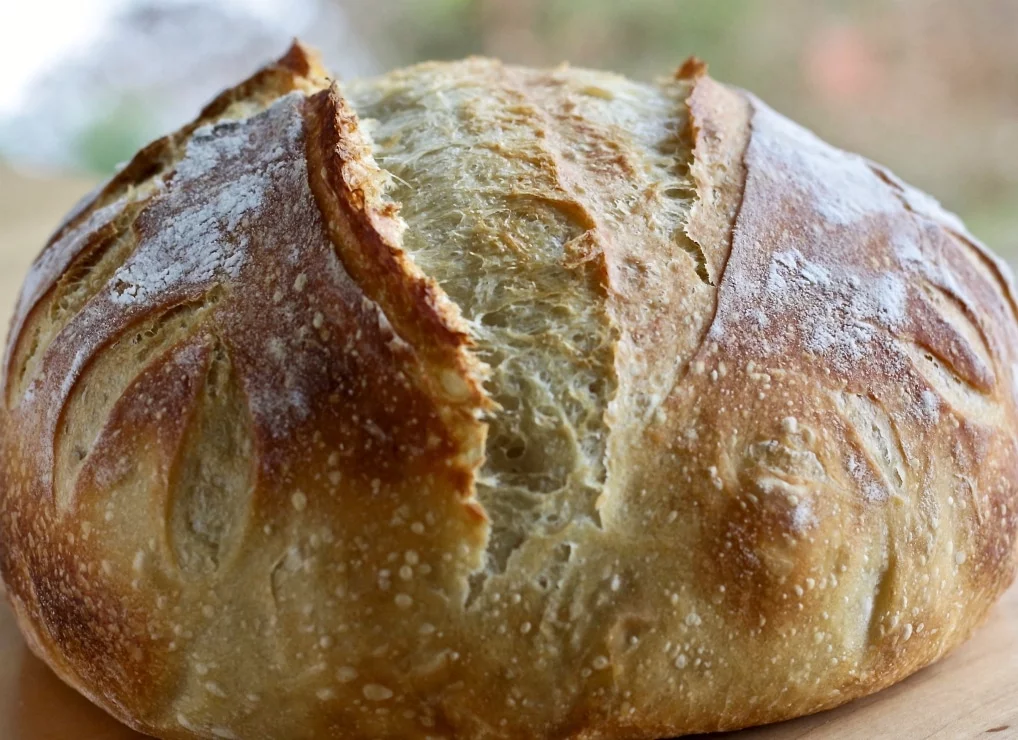
Why Does my Sourdough Bread Taste Bland?
Wondering why your sourdough bread has no flavor? Or not enough? Here are some important factors that affect every loaf of sourdough you bake. These all work as separate components of a sourdough bread profile when we bake. but sometimes more than one thing affects the flavor of your finished loaf.
Or maybe you WANT to know how to make sourdough less sour? If you wondering why is my sourdough too sour? Read on…
In the end we are fermenting wild yeast and a flour together and adding salt. The flavor is born of these three elements working together to create something special in your kitchen. But during the process of sourdough bread baking things can go wrong. When we make mistakes in the recipe, flavor is always affected.
- Under-fermented dough: If the dough is not fermented for a sufficient amount of time, the natural yeasts and bacteria present in the sourdough starter will not have enough time to develop the characteristic tangy flavor of sourdough bread.
- Not enough salt: Salt plays an important role in bread making, it helps to develop the gluten structure, improves the flavor and helps to preserve the bread. If the dough doesn’t have enough salt, it can taste bland.
- Over-proofed dough: If the dough is left to rise for too long, the gluten structure will weaken and the bread will lose its structure and taste bland.
- Insufficient acidity: Sourdough bread relies on the acidity produced by the wild yeast and bacteria to develop its characteristic tangy flavor. If the dough doesn’t have enough acidity, the bread will taste bland.
- Using low-quality or refined flour: Refined flour doesn’t have the same flavor complexity as whole wheat flour, using low-quality flour can make the bread taste bland.
- Not baking at the right temperature or for the right amount of time: Under or over baking the bread can cause it to lose flavor and taste bland.
- Not caring for the starter properly: A starter that isn’t fed regularly and kept at the right temperature can lose its ability to ferment the dough properly, resulting in a bland-tasting bread. Read our post on How to Properly Feed Sourdough Starter for More on this.
It’s important to note that these reasons can be interrelated and that it might take some experimentation and adjustments to get the bread to taste the way you want it to.
Flavor is a subjective part of the whole. Work towards your own personal perfect loaf of sourdough.
Going Deeper into Elements of the The Sourdough Flavor Profile
Tweaking the components of flavor is a process. Learn how each one affects the sourdough flavor profile of your bread. Learn how to change the recipe to bring out the flavors you most enjoy.
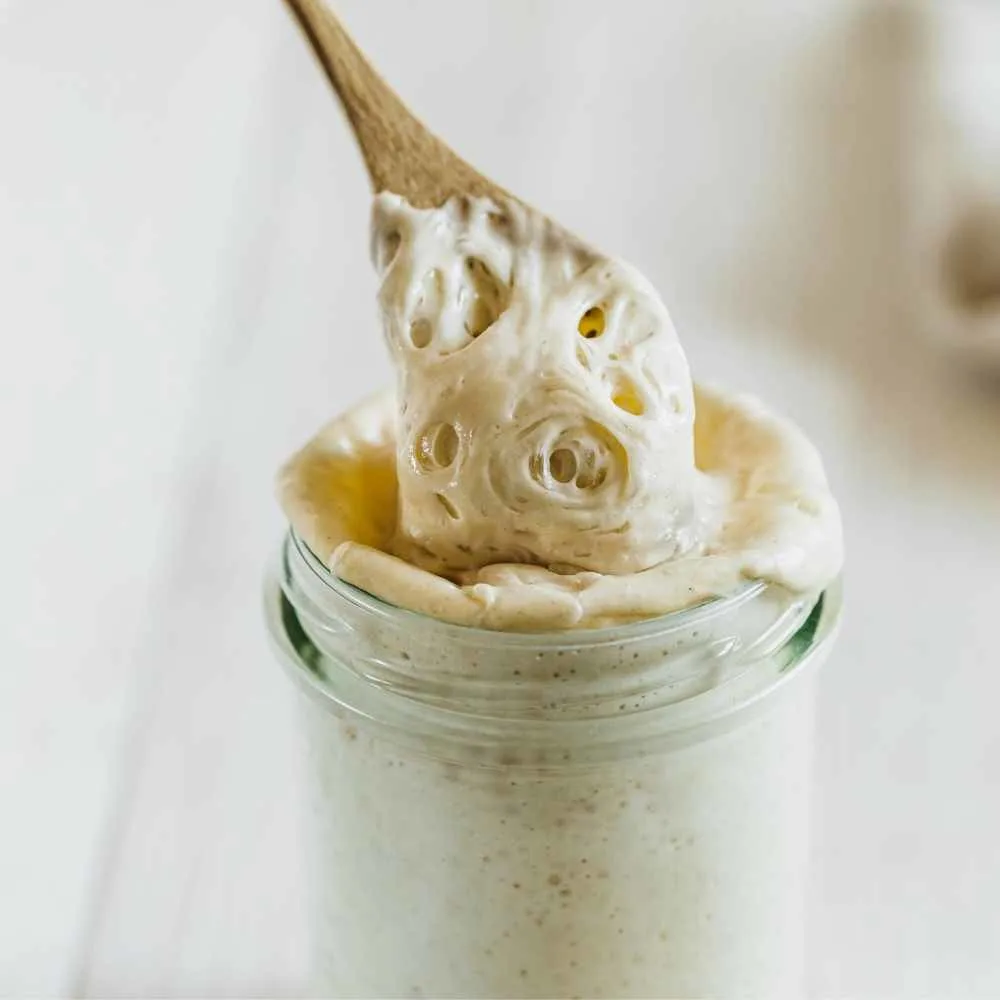
How Wild Yeast Impacts The Sourdough Flavor Profile:
Sourdough bread is made without using commercial yeast. Your kitchen is populated with your very own local wild yeasts. When you mix up a starter, those yeasts populate it and create a unique starter with its own signature flavor that is personal to your sourdough breads. Those wild yeasts can be mild or tangy. This is why San Francisco sourdough is so famous. It has VERY tangy local wild yeasts.
If you want a different flavor in your bread, one easy thing to do is purchase a sourdough starter with a flavor profile you want. Starters are available all over the USA. And probably the world.
Enterprising bakers will dry and mail their personal starters to you. It’s a thing!
Purchasing sourdough starter is very popular among bakers nowadays. We have purchased two starters. One from our baker friend Sasha Hunter. She makes and sells her Apple Jack Starter. You can purchase it here. It makes a mildly sweet sourdough bread.
Au Contraire, We also bought ‘The Beast’ starter. This is a very strong and tangy starter from the San Francisco area. Boy Howdy ‘the Beast’ is going to give you delicious tangy extra sour sourdough bread San Francisco style. Purchase the beast here on ETSY.
ETSY has TONS of different sourdough starter for sale in many different shops. When you are looking to adjust or build a sourdough flavor profile, begin with the starter.
Kayti and I show you how to revive a dried starter in this post.
We also show you how to dry your own starter so you can sell it to others or store it for the future.
More Things That Impact Your Sourdough Flavor Profile:
The Flour Impacts The flavor of Sourdough Bread:
The type of flour used in a sourdough bread recipe can greatly impact the sourdough flavor profile of the final product. Different flours have different levels of protein, gluten, and starch, all of which can affect the texture and taste of the bread.
Using a higher-protein flour, such as bread flour, will create a loaf with a chewier texture and a more complex flavor. Whole wheat flour and other whole grain flours will give the bread a nuttier taste and a denser texture. Rye flour will give a bread a distinct, earthy flavor and a more dense and moist crumb.
Using a blend of different flours can also create unique and interesting flavors. A combination of bread flour and whole wheat flour will give a bread a balance of chewiness and nuttiness. A blend of bread flour, whole wheat flour and rye flour will give a bread a chewy texture, nutty flavor and an earthy taste.
Using a different type of flour, or a different proportion of flours, may also affect the fermentation process, and will require an adjustment of the hydration of the dough, and the baking time. All of which affect the flavor of the bread as well.
Temperature in Your Kitchen Affects the Flavor of Sourdough:
Temperature in a kitchen definitely affects the flavor of sourdough bread. Yeast and bacteria are sensitive to temperature changes and will ferment at different rates depending on the temperature.
A warmer kitchen will speed up the fermentation process and will create a bread with a stronger sour flavor. The bread will also have a shorter rise time. If you are frustrated by a VERY sour starter or constantly over proofing your loaves in a high heat kitchen, use your refrigerator for dough development and reduce or eliminate counter rising your loaves until you are happy with your baked loaves.
A cooler kitchen will slow down the fermentation process and will create a bread with a milder sour flavor. The bread will also have a longer rise time.
For sourdough bread, you want to keep the kitchen temperature between 68-72F. This will provide the best environment for the yeast and bacteria to ferment, it will also ensure that the dough rises at a steady pace, and that the bread has a balanced flavor and a good texture.
Keeping a consistent temperature during the fermentation process is important. This gives you good control of the sourdough flavor profile.
Also, Sudden changes in temperature while the dough is developing can negatively affect the fermentation process. The resulting bread may have an uneven texture and a less desirable flavor.
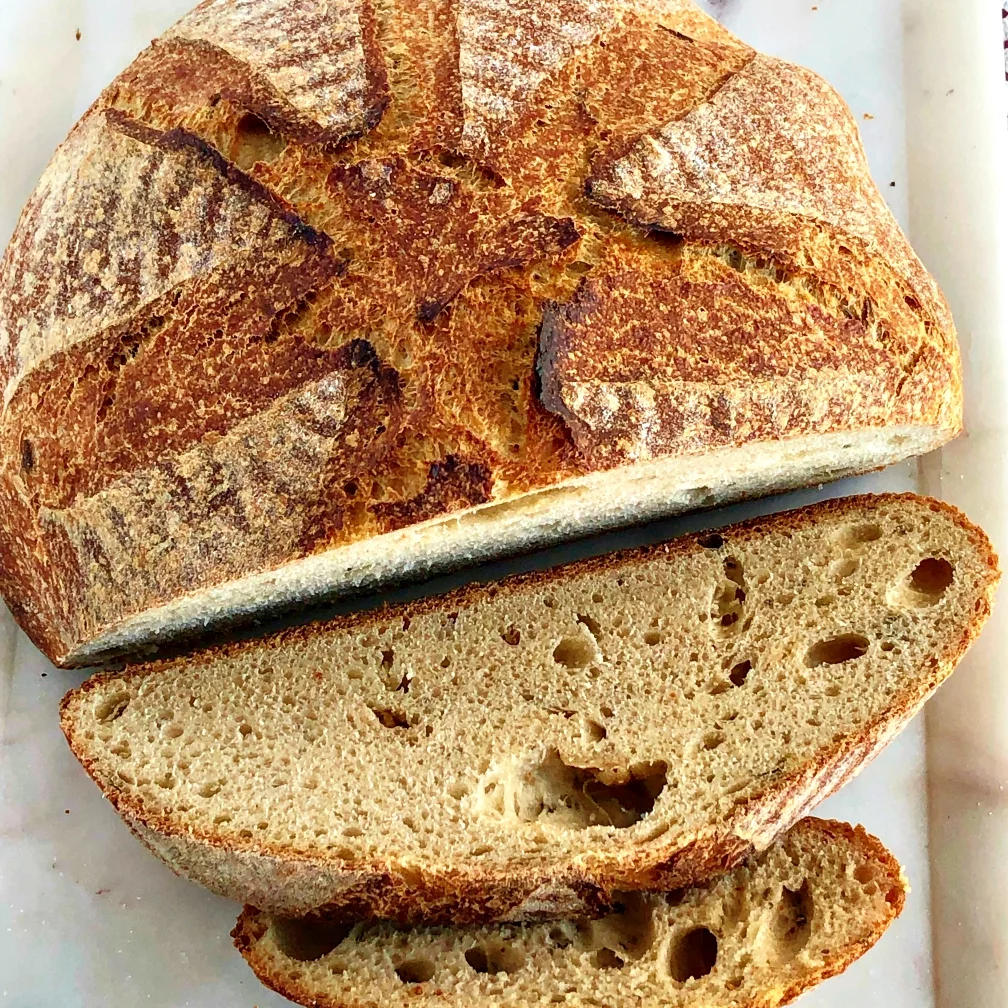
Sourdough Flavor Additives:
Using different starters from around the world allows us to experiment with the flavor our sourdough bakes. However, we can also add extra ingredients to our recipes to create new and differently flavored breads.
Take a favorite recipe you want to Jazz the flavor in. Here are some great inclusions to change up the sourdough flavor profile of your breads. I’ve done many of these inclusions for my beginner artisan bread.
Some good flavor additives to a sourdough bread recipe include:
- Herbs such as rosemary, garlic, thyme, and basil
- Spices such as cumin, fennel, and caraway
- Nuts and seeds such as pumpkin seeds, sunflower seeds, and chopped walnuts
- Dried fruits such as raisins, cranberries, and apricots
- Grated cheese such as cheddar, gouda, and parmesan
- Fresh, dried or frozen peppers of any heat can be added to bread.
- Garlic and onion powder
- Fresh or dried olives
- Smoked paprika
- Caramelized onions
- Chocolate chips or cocoa powder.
- And many more….
Be Mindful. The amount of flavor additives you are using will impact how the loaf develops and bakes. Use a good recipe (we have several in our sourdough section) to get started. Too much of an inclusion can negatively affect the fermentation process and the overall taste of the bread.
In Summary:
The Sourdough bread flavor profile is complex and affected by a variety of factors. As we have learned in this article, One of the most important factors is the starter. The specific strains of wild yeast and bacteria present in the starter will greatly influence the final taste of the bread.
Room temperature also plays a role, as warmer temperatures can lead to a faster fermentation process and a more pronounced sour flavor.
The types of flour used has a big impact on the sourdough flavor profile of the bread. Whole wheat flour, for example, will contribute a nutty flavor, while rye flour can add a tangy, earthy taste.
The hydration level, or the ratio of water to flour, in the dough also affects the flavor. A higher hydration level can lead to a more open crumb and a tangier flavor, while a lower hydration level will result in a denser crumb and a milder taste.
Other factors that can impact the flavor of sourdough bread include the length of fermentation, the addition of salt, and the use of other ingredients such as herbs, nuts, or seeds. By understanding how these factors influence the flavor of sourdough bread, bakers can experiment with different techniques and ingredients to create breads with unique and satisfying flavors.
The process of seeking the perfect sourdough flavor profile for your personal best bread is endlessly fun, creative, and at times frustrating. But this is a worthy goal for sourdough bakers. Keep at it!
Follow Us:
We enjoy meeting you on our social networks. Follow us on Facebook, Pinterest, Instagram . Tag us with your pictures of our recipes and comment on how it went for you. We would love to see what you do with them.
We often like, comment and share your posts of our recipes on our daily Instagram stories.
Ask questions and rate the recipe in the comments section below. Please share what you did with this recipe. We are always looking for more and better ways to make homemade food. Other cooks love your ideas!
Recent Posts:
Further Reading: How to make sourdough more sour King Arthur Article
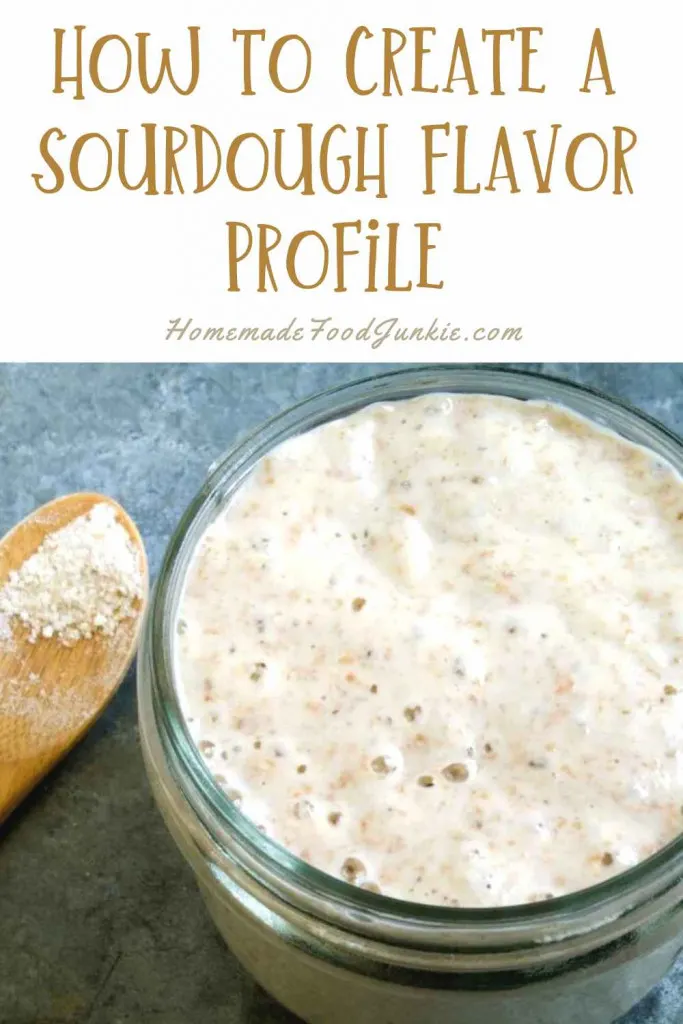

John Lisella
Wednesday 15th of February 2023
Lots of bubbles in my sourdough but it won't pass the float test..help ..thanks
Diane
Wednesday 15th of February 2023
Hi John. I have done two posts on building and properly feeding your starter to get it strong and stable for making bread. Here they are. How to Build a starter, how to properly feed your starter. These are posts I made to help bakers learn more about how starters work and how to make them strong and healthy. I'm happy to continue this conversation if you still have questions or comments but I'd start with these posts and go from there. Have a wonderful day!